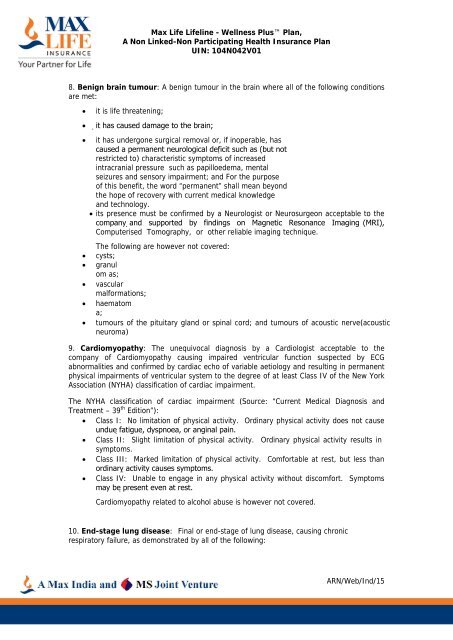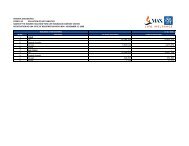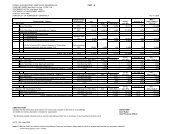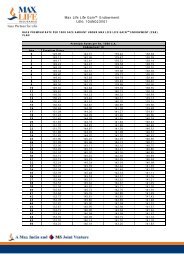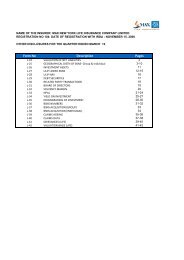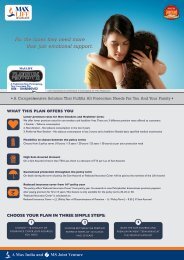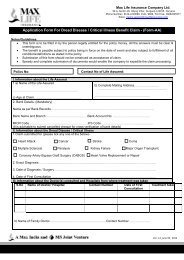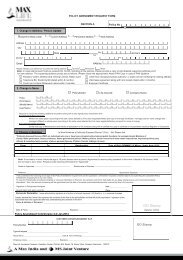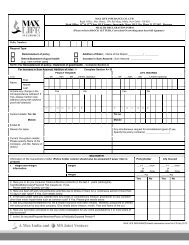Download - Max Life Insurance
Download - Max Life Insurance
Download - Max Life Insurance
You also want an ePaper? Increase the reach of your titles
YUMPU automatically turns print PDFs into web optimized ePapers that Google loves.
<strong>Max</strong> <strong>Life</strong> <strong>Life</strong>line - Wellness Plus Plan,A Non Linked-Non Participating Health <strong>Insurance</strong> PlanUIN: 104N042V018. Benign brain tumour: A benign tumour in the brain where all of the following conditionsare met:• it is life threatening;• it has caused damage to the brain;• it has undergone surgical removal or, if inoperable, hascaused a permanent neurological deficit such as (but notrestricted to) characteristic symptoms of increasedintracranial pressure such as papilloedema, mentalseizures and sensory impairment; and For the purposeof this benefit, the word “permanent” shall mean beyondthe hope of recovery with current medical knowledgeand technology.• its presence must be confirmed by a Neurologist or Neurosurgeon acceptable to thecompany and supported by findings on Magnetic Resonance Imaging (MRI),Computerised Tomography, or other reliable imaging technique.The following are however not covered:• cysts;• granulom as;• vascularmalformations;• haematoma;• tumours of the pituitary gland or spinal cord; and tumours of acoustic nerve(acousticneuroma)9. Cardiomyopathy: The unequivocal diagnosis by a Cardiologist acceptable to thecompany of Cardiomyopathy causing impaired ventricular function suspected by ECGabnormalities and confirmed by cardiac echo of variable aetiology and resulting in permanentphysical impairments of ventricular system to the degree of at least Class IV of the New YorkAssociation (NYHA) classification of cardiac impairment.The NYHA classification of cardiac impairment (Source: “Current Medical Diagnosis andTreatment – 39 th Edition”):• Class I: No limitation of physical activity. Ordinary physical activity does not causeundue fatigue, dyspnoea, or anginal pain.• Class II: Slight limitation of physical activity. Ordinary physical activity results insymptoms.• Class III: Marked limitation of physical activity. Comfortable at rest, but less thanordinary activity causes symptoms.• Class IV: Unable to engage in any physical activity without discomfort. Symptomsmay be present even at rest.Cardiomyopathy related to alcohol abuse is however not covered.10. End-stage lung disease: Final or end-stage of lung disease, causing chronicrespiratory failure, as demonstrated by all of the following:ARN/Web/Ind/15


